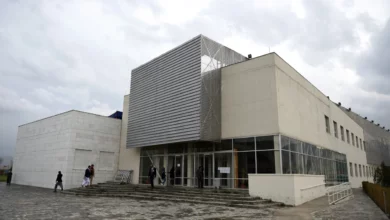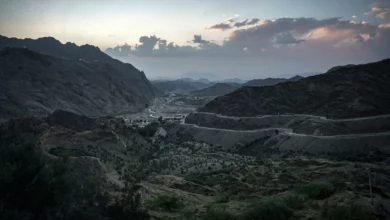Kabul–People living on the front line of a major US-led offensive against Taliban militants in southern Afghanistan are trapped in their homes with little access to food and health care, rights groups say.
Hundreds more who fled the area before fighting began over a week ago are receiving little help in harsh winter conditions, they add.
"We are seriously worried about the safety of civilians, especially in the Marjah area," said Ajmal Samadi, head of the independent group Afghan Rights Monitor (ARM).
"People who are ill cannot get to hospitals, and others cannot bring them medicines. They cannot get food, or even go outside to look after their farms."
He added that food prices were rising due to the assault and people with medical needs–from war wounds to pregnancy–were largely unable to get treatment.
The assault on the Marjah and Nad Ali districts of Helmand province launched on 13 February is being held up by snipers and innumerable crude bombs planted by Taliban fighters, commanders say.
The aim of the operation, dubbed Mushtarak (Together), is to drive Taliban from the area in the central Helmand River valley, where they have held sway with drug traffickers for at least two years.
The Afghan government aims firstly to re-establish sovereignty, then provide security, clinics, schools and jobs.
Mushtarak is a test of US President Barack Obama’s new counter-insurgency strategy, aimed at winning the trust of the population and neutralizing the Taliban.
NATO and Afghan leaders have said they hatched the assault in close cooperation with each other so the military phase can be immediately followed by the establishment of civil administration and services.
But Norine MacDonald, president of London-based thinktank the International Council for Security and Development, which has an office in the provincial capital Lashkar Gah, said planners had paid little regard to civilian well-being.
"The forward planning we heard so much about did not include ensuring that the local population would be able to leave and live elsewhere in decent conditions, with access to food and medical care," she said.
More than 2800 families–averaging about five members each–had been displaced before and during the fighting, said Abdul Rahman Hutaki, head of the Human Rights and Environment Organisation, an independent Afghan group.
"Conditions for the displaced are deteriorating and sufficient assistance is not getting through," he said.
Provincial authorities say 2000 displaced families are in Lashkar Gah, receiving help from Afghan and international charities.
But Marjah resident Ahmad Jan, speaking by telephone, said, "Since I came to Lashkar Gah, I haven’t received any assistance".
Ghulam Farooq Noorzai, Helmand’s director for refugees’ affairs, said food and winter clothing had been distributed to 1400 families.
The 200-square-kilometer target zone has been strewn with improvised explosive devices (IEDs)–on roads, in fields, hanging from trees, even plastered into the walls of homes, commanders say.
Marjah resident Abdul Ghias, 53, told AFP by telephone the IEDs made it impossible to move in or out of the township, adding, "Most people cannot get hold of medicine or food, and people cannot work in their farms."
NATO commanders say it could be another three weeks before the area is under control as fighting between militants and the 15,000-strong force of US Marines, NATO and Afghan troops is proving "difficult."
In the meantime, people caught in crossfire, shot as Taliban human shields, or injured by bombs face difficulties getting treatment.
The International Committee of the Red Cross says it has the only medical facility in Marjah, a first aid station manned by five people.
Lashkar Gah, where there are two hospitals, is 20km away by the shortest route, said Bijan Farnoudi, Red Cross spokesperson in Kabul.
But the roads are so heavily mined, few are willing to make the journey and alternative routes can take up to seven hours, if anyone dares use them, he said.
Inayatullah Ghafari, Helmand’s provincial health director, said, "Since 13 February, 50 people have been brought to different hospitals, injured in different ways, including roadside bombs, mines and in crossfire."
The wounded, including women and children, had mostly been taken to the hospitals in Lashkar Gah, he said.




